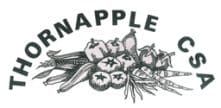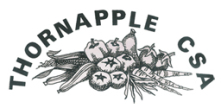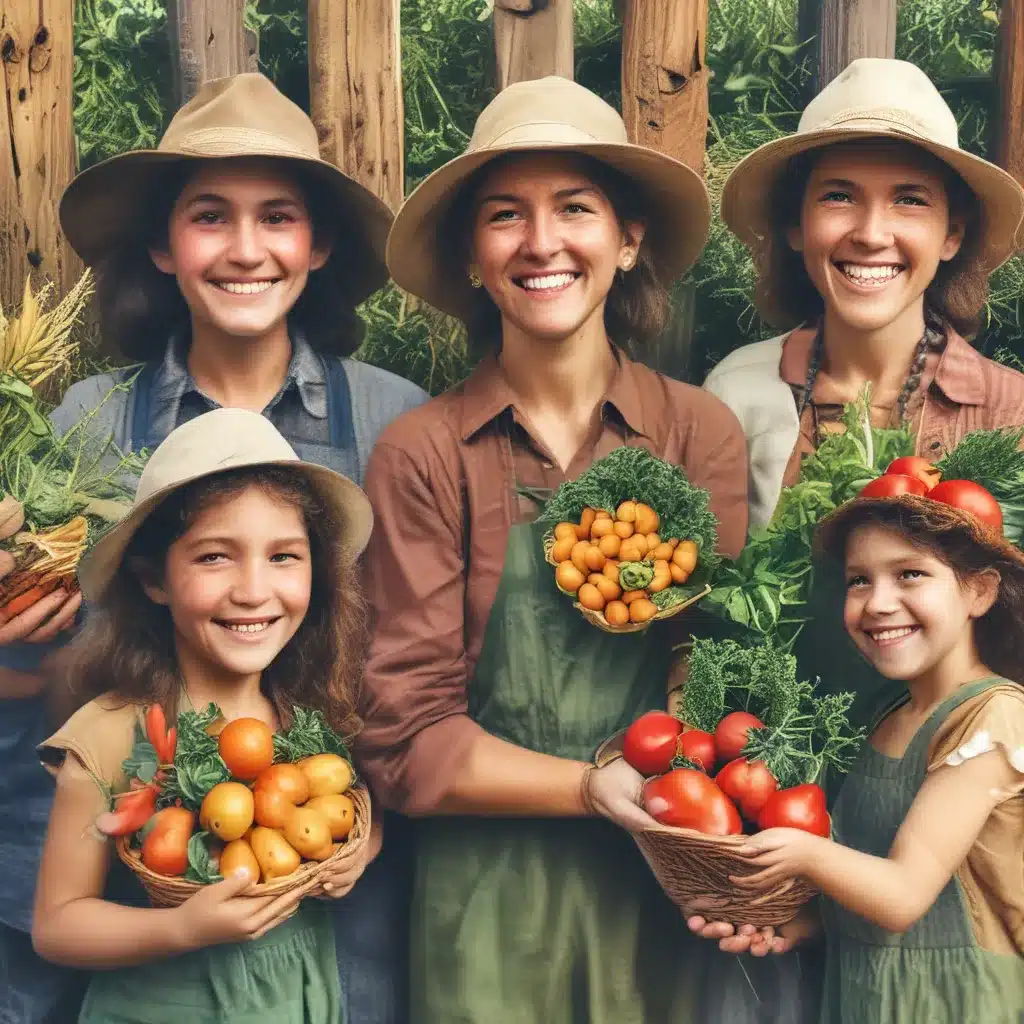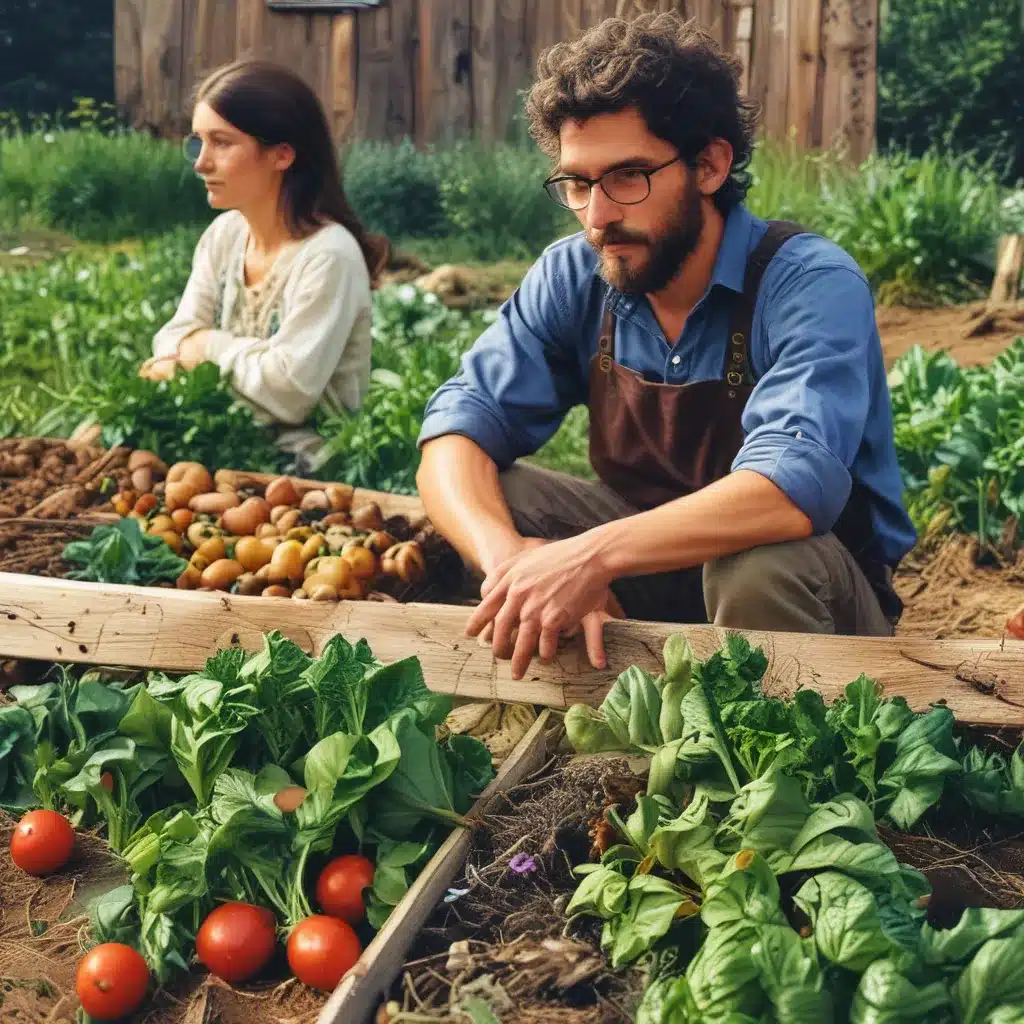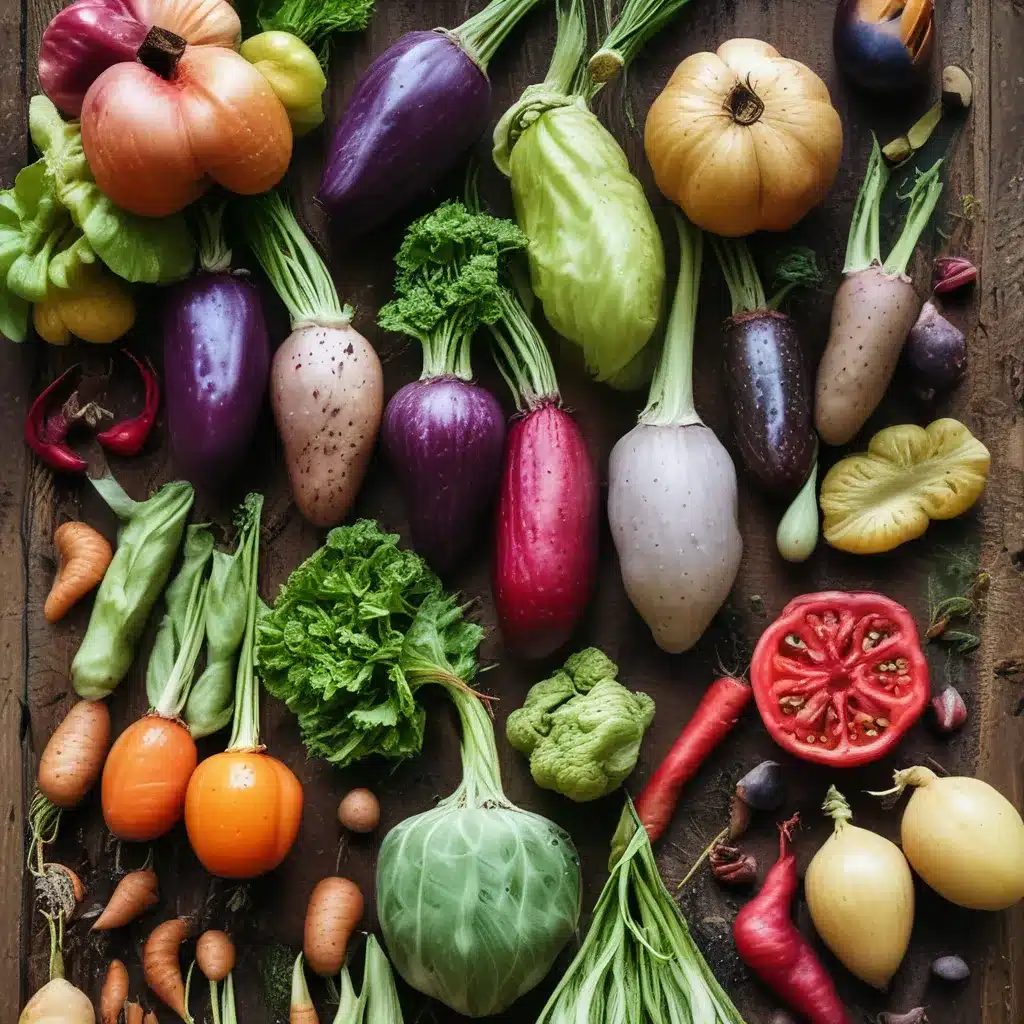
Discovering the Forgotten Treasures of Our Past
As I stroll through the vibrant ThornApple CSA farmer’s market, my senses are immediately captivated by the kaleidoscope of colors, shapes, and aromas that unfold before me. Rows of sun-kissed tomatoes in hues of crimson, amber, and deep purple beckon me to uncover their stories. Nearby, knobby, misshapen carrots and bulbous, pear-shaped squash whisper tales of a time long forgotten, inviting me to dive headfirst into the rich history of heirloom vegetables.
It’s no secret that modern agriculture has prioritized uniformity, shelf life, and yield over the diverse flavors and unique characteristics of our ancestral crops. But as I chat with the passionate farmers who have dedicated their lives to preserving these botanical relics, I can’t help but feel a sense of wonder and reverence. These are the true guardians of our food heritage, keeping alive the rich tapestry of biodiversity that once thrived in our gardens and on our plates.
Unearthing the Roots of Heirloom Varieties
As I delve deeper into the world of heirloom vegetables, I’m struck by the sheer diversity and complexity of these living links to our past. Each variety, with its distinctive appearance, flavor profile, and cultural significance, represents a unique chapter in the story of human civilization. From the crimson-hued ‘Cherokee Purple’ tomato, whose roots can be traced back to the indigenous peoples of the American Southeast, to the ‘Charentais’ melon, a French heritage variety prized for its velvety texture and floral aroma, these heirloom treasures are living embodiments of our rich culinary heritage.
Heirloom vegetables are not mere relics of the past, however; they are dynamic, ever-evolving entities that reflect the ingenuity and resourcefulness of the farmers, gardeners, and communities who have nurtured them over the centuries. As I listen to the stories shared by the Thornton-based CSA farmers, I’m struck by the way these heirloom varieties have adapted to local climates, soil conditions, and cultural preferences, creating a tapestry of flavors and textures that are as diverse as the people who have grown them.
The Importance of Preserving Heirloom Diversity
As I continue my journey of discovery, I’m confronted by the sobering reality that many of these heirloom varieties are teetering on the edge of extinction. The relentless march of industrial agriculture, with its emphasis on high-yielding, standardized crops, has led to the displacement and near-obliteration of these botanical treasures. It’s a loss that extends far beyond the culinary realm, as each vanished variety represents a unique piece of our shared heritage and a testament to the resilience and ingenuity of our ancestors.
But all is not lost, and the farmers of the Thornton CSA are leading the charge in the fight to preserve heirloom biodiversity. By dedicating their land, their time, and their passion to the cultivation of these rare and endangered varieties, they are not only ensuring the survival of these botanical gems but also inspiring a new generation of eaters to rediscover the joys of diverse, flavorful produce.
Embracing the Diversity of Heirloom Vegetables
As I wander through the bountiful stalls of the Thornton CSA farmer’s market, I’m awestruck by the sheer variety of heirloom vegetables on display. From the towering, ribbed ‘Striped German’ tomatoes to the diminutive, jewel-toned ‘Thumbelina’ carrots, each item tells a story of resilience, adaptation, and cultural significance.
| Heirloom Variety | Description | Origin |
|---|---|---|
| ‘Cherokee Purple’ Tomato | A deep purple-black tomato with a rich, complex flavor and a slightly softer texture. | Indigenous to the American Southeast |
| ‘Charentais’ Melon | A French heirloom variety known for its velvety texture, floral aroma, and sweet, aromatic flesh. | France |
| ‘Striped German’ Tomato | A large, ribbed tomato with a striking orange and red striped exterior and a robust, slightly acidic flavor. | Germany |
| ‘Thumbelina’ Carrot | A diminutive, round carrot with a sweet, crunchy texture and a vibrant orange hue. | Unknown, but likely developed in Europe |
As I carefully select my bounty, I can’t help but marvel at the stories that each of these heirloom treasures holds. The ‘Cherokee Purple’ tomato, with its deep, earthy tones, whispers of the rich cultural heritage of the First Nations peoples who cultivated it for generations. The ‘Charentais’ melon, with its delicate floral notes and creamy texture, transports me to the sun-drenched orchards of the French countryside. And the whimsical ‘Thumbelina’ carrots, with their diminutive size and vibrant color, remind me of the enduring resilience and adaptability of our ancestral crops.
Savoring the Flavors of the Past
Back in my kitchen, I carefully unpack my Thornton CSA haul, each item a living testament to the power of biodiversity. As I slice into the tomatoes, the rich, almost meaty texture and the complex blend of sweetness and acidity dance across my palate, igniting a symphony of flavors that I’ve never experienced with a store-bought tomato. The ‘Charentais’ melon, with its velvety flesh and floral notes, is a revelation, a delicate balance of sweetness and refreshing juiciness that transports me to a world beyond the confines of my kitchen.
With each bite, I’m struck by the depth and nuance of these heirloom vegetables, flavors that have been honed and refined over generations of careful cultivation and selection. It’s a humbling experience, a reminder that our modern food system has sacrificed so much in the name of efficiency and uniformity. But in the hands of passionate farmers like those at the Thornton CSA, these heirloom varieties are being reborn, their stories and cultural significance being woven back into the fabric of our collective culinary consciousness.
Cultivating a Sustainable Future
As I savor the last bites of my heirloom-laden feast, I can’t help but feel a sense of hope and optimism for the future of our food system. The work being done by the Thornton CSA and other like-minded organizations is not just about preserving the past; it’s about building a more sustainable, resilient, and flavorful future.
By championing the cultivation and consumption of heirloom vegetables, these farmers are not only safeguarding the rich tapestry of our food heritage but also inspiring a new generation of eaters to reconnect with the land, to appreciate the diversity of our botanical world, and to embrace the unique flavors and stories that each heirloom variety has to offer.
And as I reflect on my journey of discovery, I can’t help but feel a sense of gratitude and wonder. These heirloom vegetables, these living links to our past, are not just delicious; they are a testament to the ingenuity, resilience, and cultural richness of our ancestors. By unearthing their secrets and sharing their stories, we are not only preserving biodiversity, but also nourishing the very roots of our humanity.
